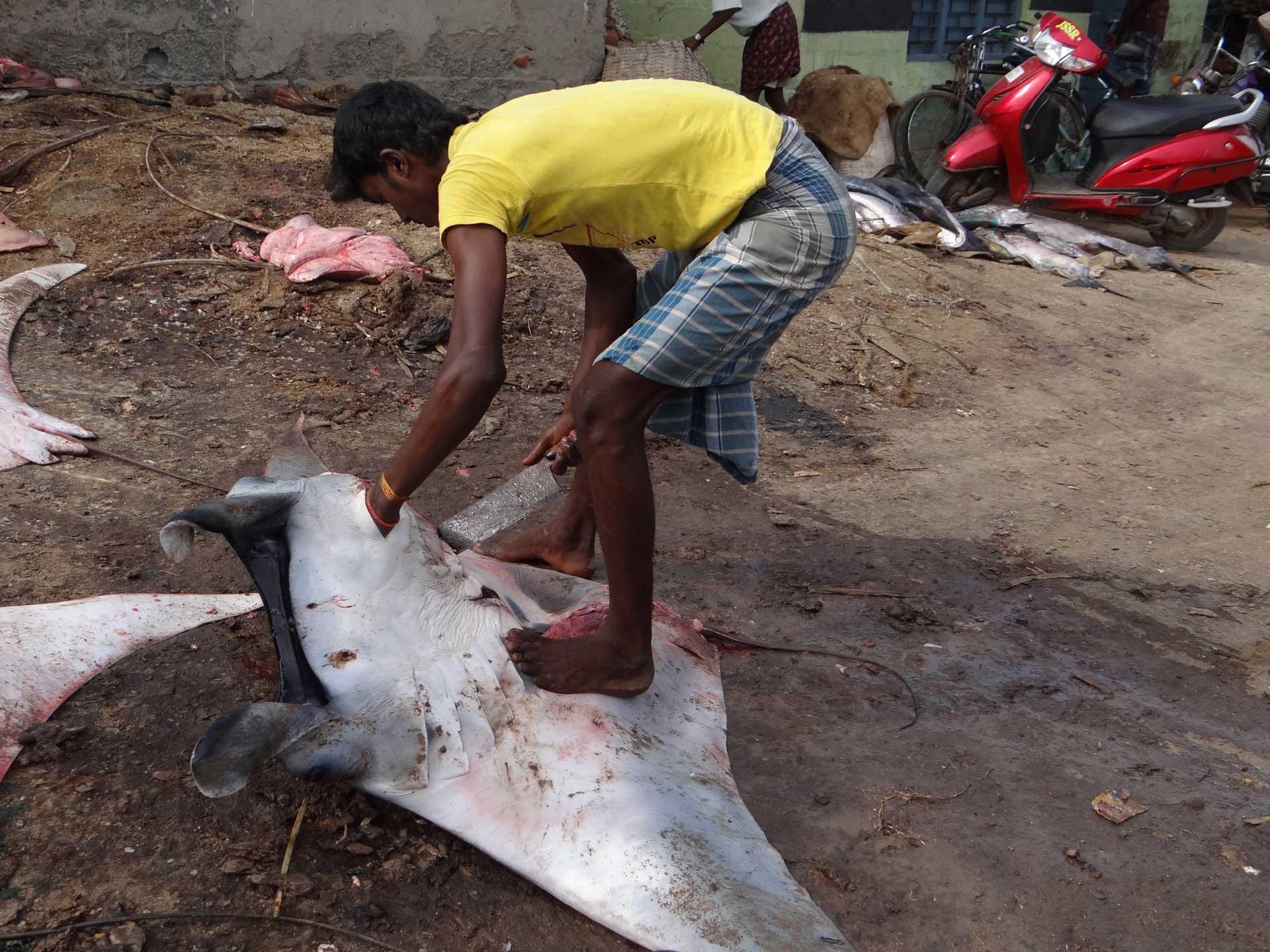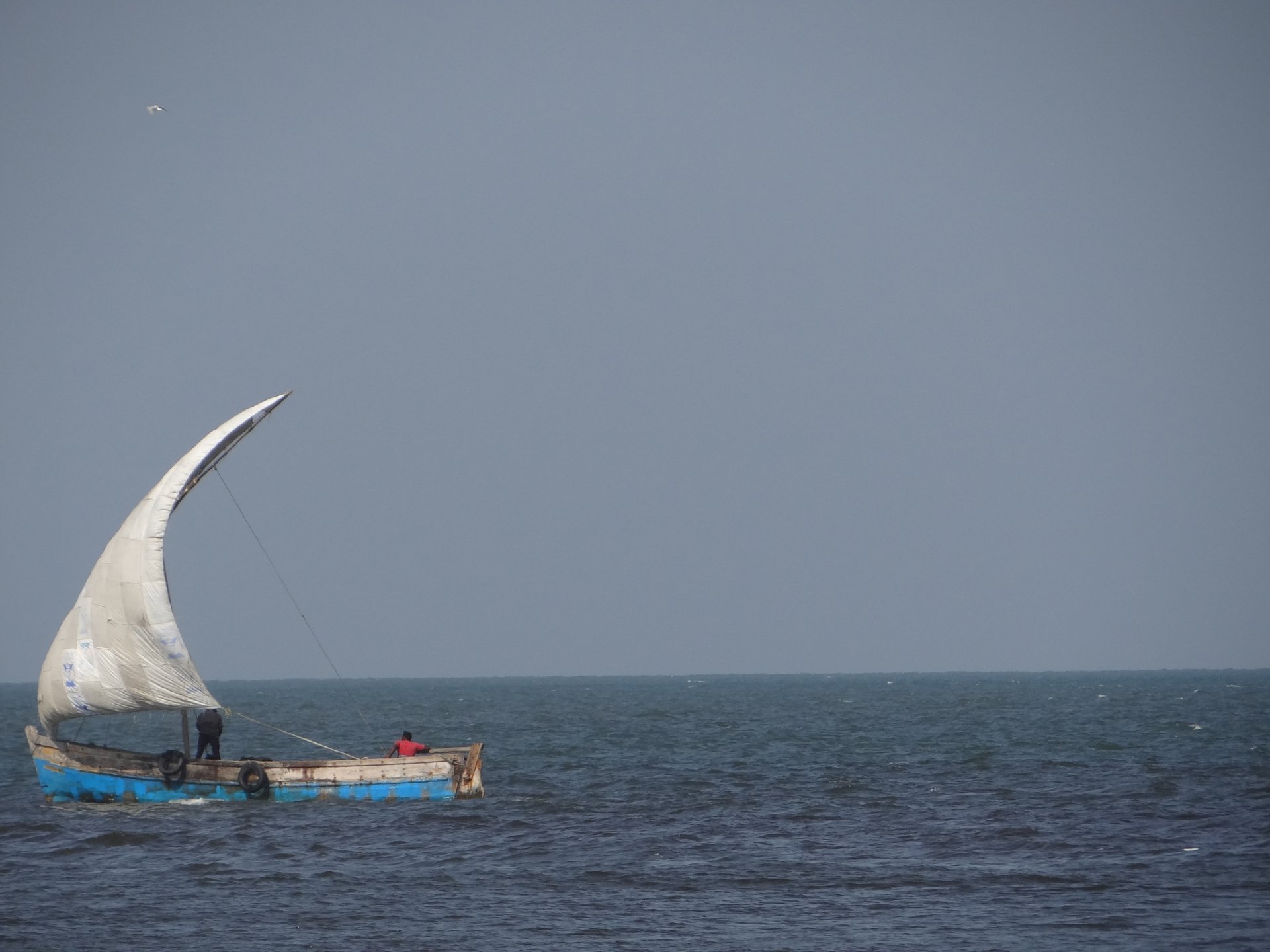The mobulid fishery in India
It was a sunny day when I set off on the journey to my study area in the Gulf of Mannar Biosphere Reserve. Proclaimed by UNESCO’s Man and the Biosphere Programme, the reserve lies at the south-eastern tip of India and I was bound for the fishing village of Tharuvaikulam, where I usually carry out my morning surveys. During the ride an informant-cum-fisherman called to tell me that a huge surprise was waiting for me. When I reached the village, I found a mass of people crowding around a manta ray. It must have weighed between 400 and 500 kilograms (880 and 1,100 pounds) and had probably been caught on the Sri Lankan side of the gulf.

Manta ray at fish processing unit. Photo by Mohanraj Theivasigamani | © Manta Trust

Photo by Mohanraj Theivasigamani | © Manta Trust
The landing of these gentle giants on these shores has been a constant source of concern to me. The fishermen don’t realise the importance of manta rays and most of them are only too happy to pose for photographs with their catch. Before long the manta’s dorsal fins had been chopped off, along with the head, and had been loaded into the fish processing unit that would cut them into smaller pieces for easy transportation and would remove the gill plates. The intestines and the tail section were left on the shore to be scavenged by dogs and birds.

Manta ray being chopped. Photo by Mohanraj Theivasigamani | © Manta Trust

The gill plate of a manta ray. Photo by Mohanraj Theivasigamani | © Manta Trust
Every day I witness the landing of many mobulid rays here, including Mobula japanica, M. tarapacana, M. thurstoni and Manta birostris, although the last is not landed regularly. The fishermen of this village catch tuna throughout the year and mobulids are the by-catch of this fishery. Once processed, the meat of the mobulids ranges in price from USD$ 2,7 – USD$ 3 per kilogram and the dried gill plates are sold for between USD$ 105 – USD$ 120 per kilogram. The year-round tuna catch at Tharuvaikulam attracts merchants from various parts of India.

Tuna kept for auction. Photo by Mohanraj Theivasigamani | © Manta Trust

A lorry full of mobulids. Photo by Mohanraj Theivasigamani | © Manta Trust
When the temperature rose at noon, it was time to move on to the Therespuram fish market at Tuticorin. In ancient times this place was famous for its pearl fishery, with pearls being traded to the empires of Greece and Rome. But when restrictions were placed on the pearl fishery by the state government of Tamil Nadu in 1971, the fishermen began to target bony fishes instead of bivalves. In recent times, fishing has been intensive and many different life forms from this marine biosphere reserve have been brought ashore.

Decomposing mobulid heads. Photo by Mohanraj Theivasigamani | © Manta Trust

Photo by Mohanraj Theivasigamani | © Manta Trust
Gill nets set for tuna are the major culprits for the mobulid bycatch-cum-fishery, which starts in April and continues until the end of September. The most common species landed here are Mobula tarapacana, M. thurstoni and, sometimes, Manta birostris, with prices similar to those at the Tharuvaikulam market (USD$ 2,7 – USD$ 3 per kilogram for meat and USD$ 105 – USD$ 120 per kilogram for gill plates). Gill plates are transported from various parts of the country to Chennai, the capital of the state of Tamil Nadu and the hub from which the gill plates are exported to China.

Fish processing unit with mobulids at Tharuvaikulam. Photo by Mohanraj Theivasigamani | © Manta Trust
The fishers of both Tharuvaikulam and Tuticorin are unaware of the ecological importance of manta rays to the oceans. The Gulf of Mannar Biosphere Reserve is home to many other large marine animals, such as dolphins, whales, sharks, dugongs and turtles, but its rich biodiversity is being depleted by human ignorance and greed. It’s time to educate and unite people against the exploitation of Mother Nature at all levels.

Photo by Mohanraj Theivasigamani | © Manta Trust
